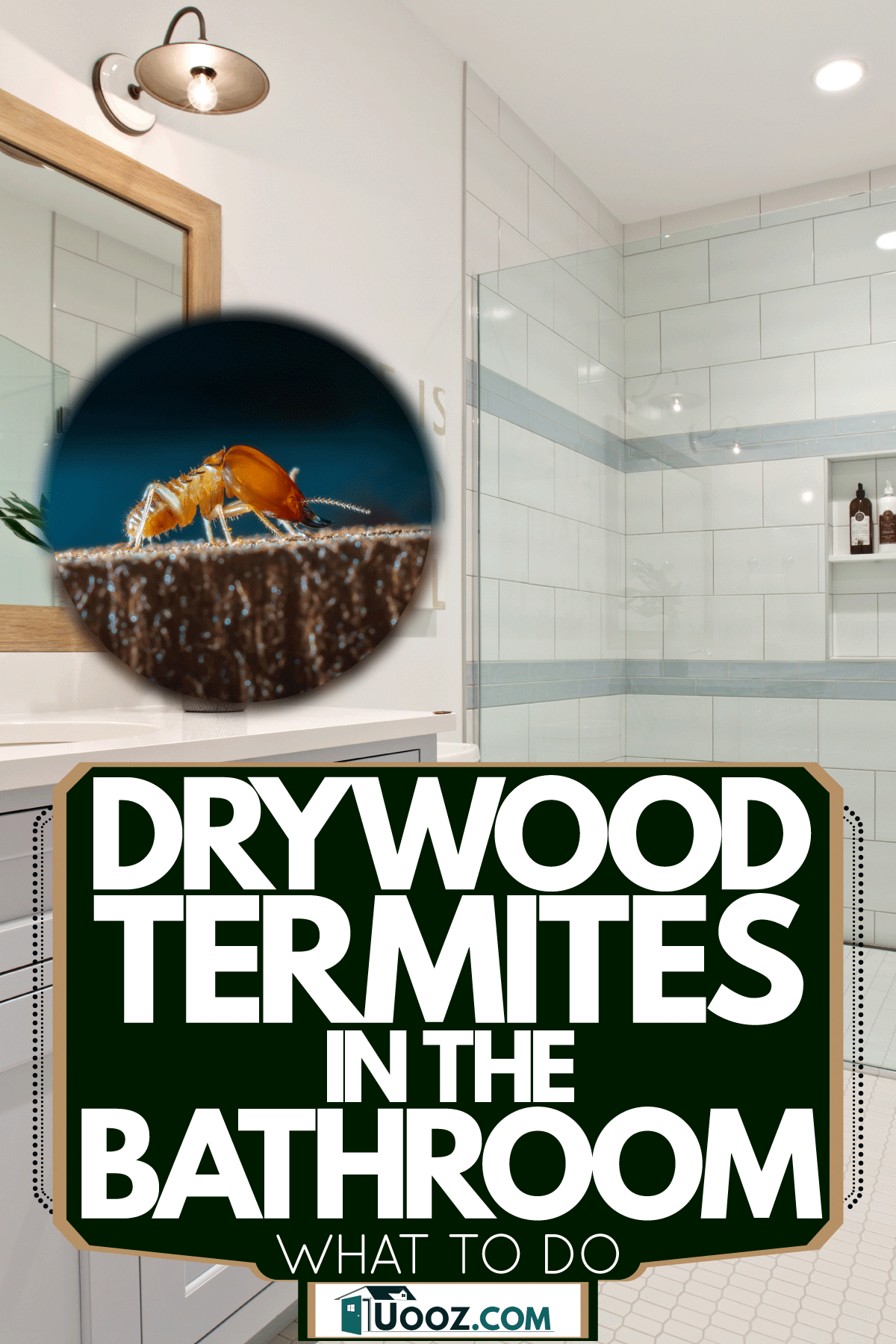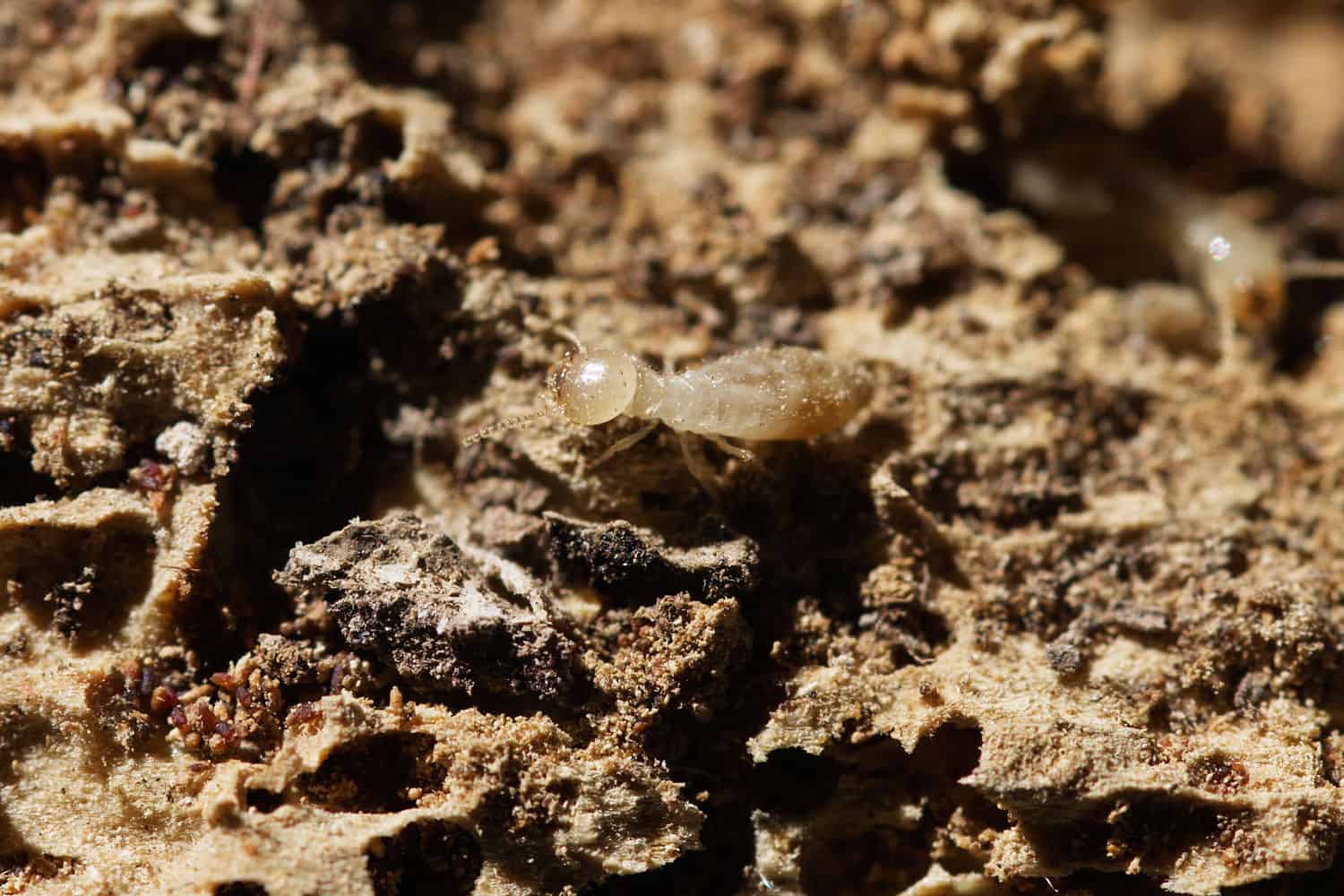If you're a homeowner who's ever had a drywood termites infestation, you know the damage they can cause. Getting rid of these damage-causing pests can be a true nuisance, so it's best to know which way is the most effective. We've researched the most effective ways to get rid of drywood termites located in the bathroom of a home, and in this post, we will share them with you.
There are several different methods that you can use to get rid of drywood termites in your bathroom. You can use all-natural solutions such as nematodes, cayenne pepper, neem oil, and Diatomaceous Earth. Or, you can use common chemical pesticides such as arsenic-based baits, chemical treatments, and boric acid. The type of solution that will be most effective will depend on the extent of the infestation.
Many people prefer to use professional pest control companies to get rid of termites. Still, it's also helpful to know what DIY options are available, especially if the infestation is minimal. Continue reading to learn about the most commonly used DIY message to get rid of drywood termites in the bathroom.

Signs Of Drywood Termites
If you have a drywood termite infestation, you'll typically notice signs in the areas where lumber is located. And if you do notice any of these signs, it's best to act quickly with DIY or professional extermination methods.

Burrowed wood tunnels
Drywood termites eat away at wood studs, joists, and panels, causing hollowed-out areas of the wood structures in your home. You may notice them under broken pieces of timber in or around your basement, on windowsills, beneath baseboards, or in the cabinet beneath the sink.
Droppings
Another known sign of drywood termite infestation is termite droppings, also known as frass. Unlike other termite species, drywood termites don't use their fecal matter to help build their tunnels but instead place it in holes near their nests. The result is a dark powdery substance in addition to small black marks around their infestation areas.
Chewing or banging noises
Termites are known to be fairly noisy eaters. As they burrow through timber, they bang their heads against the lumber in addition to shaking their bodies to signal danger to their colony. These noises are very low and subtle, and you may only hear them at night when homes are typically quieter. If you hear any clicking or chewing sounds coming from inside the walls or ceilings, chances are that you may have an infestation.
Papery-like timber
As drywood termites eat through lumber, they cause the structure to deteriorate significantly. Eventually, this will leave only a thin veneer of timber left, giving it a paper tree or hollow sound if you tap on it. You may also notice unexplained cracks on the walls in your home or on visible wall studs where termites have eaten away at the cellulose in the lumber.
Also, if you notice that your floor suddenly feels a bit spongy or springing when you step on it, you may want to do an inspection as this is also a sign of a drywood termite infestation.
Methods to Eradicate Drywood Termites in the Bathroom
One of the best ways to get rid of drywood termites is to use products design for the home's exterior. However, if you have an infestation in your bathroom, there are several methods that you can use on the interior areas as well. Let's take a look.
Boric Acid
Boric acid is one of the best all-natural pesticides you can use, and it's also a natural wood preservative. Boric acid works by preventing termites from ingesting nutrients from lumber, eventually causing them to die from starvation. To apply boric acid to your bathroom, dilute it with water and pour it into a spray bottle. Next, spray the solution around the areas of the infestation. Continue this process every day for about a week until you notice signs that the infestation has cleared.
Learn more about boric acid on Amazon.
Direct Chemical Treatment
If you have an invasive drywood termite infestation in your bathroom, applying a direct chemical treatment definitely helps to get rid of them. These pesticide treatments will kill termites upon contact. The most common ingredients for these pesticides include fipronil, arsenic trioxide, imidacloprid, and permethrin. It's best to use extreme caution when placing these treatments, as they can harm young children and pets.
So to say, you'll want to place them near internal walls, around corners, behind the toilet, and in other inconspicuous areas. You also want to evacuate your home for a few days after using these methods to prevent the poison transference effect.
Check out this termite pesticide on Amazon.
Poisonous Baits
You can also place termite baits in your bathroom and the exterior of your home to get rid of the infestation. These days are typically slow-acting, but they work very well to interrupt the natural growth of drywood termites. They kill the termites before they are fully formed adults. They also have a delayed reaction that causes infected termites to spread the insecticide to the rest of the colony.
Check out Spectracide's Termite Bait Stakes on Amazon.
Cayenne Pepper
Cayenne pepper is one of the most popular all-natural pesticides available. It's effective at deterring and killing termites in addition to a number of other common household pests. Cayenne pepper has an active chemical, capsaicin, which is responsible for its hot and spicy flavor. Capsaicin actively kills termites by causing severe damage to their nervous systems.
Cayenne pepper is great to use on bathroom termites that have not yet spread to other home areas. Spread the cayenne pepper around the bathroom for five or six days and check to see if the pests are eradicated. Repeat as necessary.
Nematodes
Applying nematodes to the bathroom can be another effective method for getting rid of drywood termites. These tiny microscopic roundworms feed on termites and release bacteria that poisons the colonies as they develop. They're completely safe and aren't known to have any negative effects on humans or pets. You can purchase nematodes from any home gardening store or online.
Diatomaceous Earth
Diatomaceous Earth is a type of sand that is made up of silica and fossilized algae. Not only does it have health benefits, but it's also one of the best-known natural alternatives to killing termites and other common household pests. The sand is harmless to humans and pets but quite dangerous to termites as it penetrates their outer shell, causing moisture to escape from their body. For this method, you'll simply need to spread the sand around the infested areas in the bathroom four to five times a week until the termites are eradicated.
Learn more about Diatomaceous Earth on Amazon.
Neem Oil
Neem oil can also be used to get rid of drywood termites. It works by changing the internal hormonal system of termites, preventing them from mating and eating--ultimately preventing them from laying eggs. You can buy neem oil online or in most home gardening stores for under $15. It's best to dilute the oil with water in a ratio of 1:2 and apply it to the areas of the infestation for the best treatment.
Read more details about neem oil on Amazon.
How Long Does It Take For Drywood Termites To Cause Damage?
The specific length of time that it takes drywood termites to cause noticeable damage to a home can vary based on several different factors. However, a single colony of termites can eat through a typical 2x4 wall stud in about five to six months.
Do Drywood Termites Leave On Their Own?
Unfortunately, no, they'll need to be exterminated. Drywood termites will continue to breed, lay eggs, and thrive as long as they have a food source.
Are Drywood Termites Hard To Get Rid Of?
Drywood termites can be extremely hard to get rid of. This means that you may need to use a multi-pronged approach if you plan to exterminate them yourself. If not, a professional exterminator may be helpful.
How Serious Are Drywood Termites?
Drywood termites are very serious, as they can cause significant damage to the wood surfaces of your home. If left untreated, they can weaken the integrity of your home's structure, resulting in safety hazards.
How Much Does It Cost To Treat Drywood Termites?
The cost for drywood termite treatment will vary depending on the type of treatment and the extent of the infestation. Exterminators may charge anywhere from $200 to over $800 for more invasive infestations.
Wrapping Things Up
We hope this post has helped provide you with the best methods for drywood termite removal. Remember, if you notice any signs of infestation, it's best to implement an extermination plan immediately to prevent further damage.
Before you go, be sure to check out our other posts:
Are My Gutters Too Small? (Inc. How To Increase Gutter Capacity)







